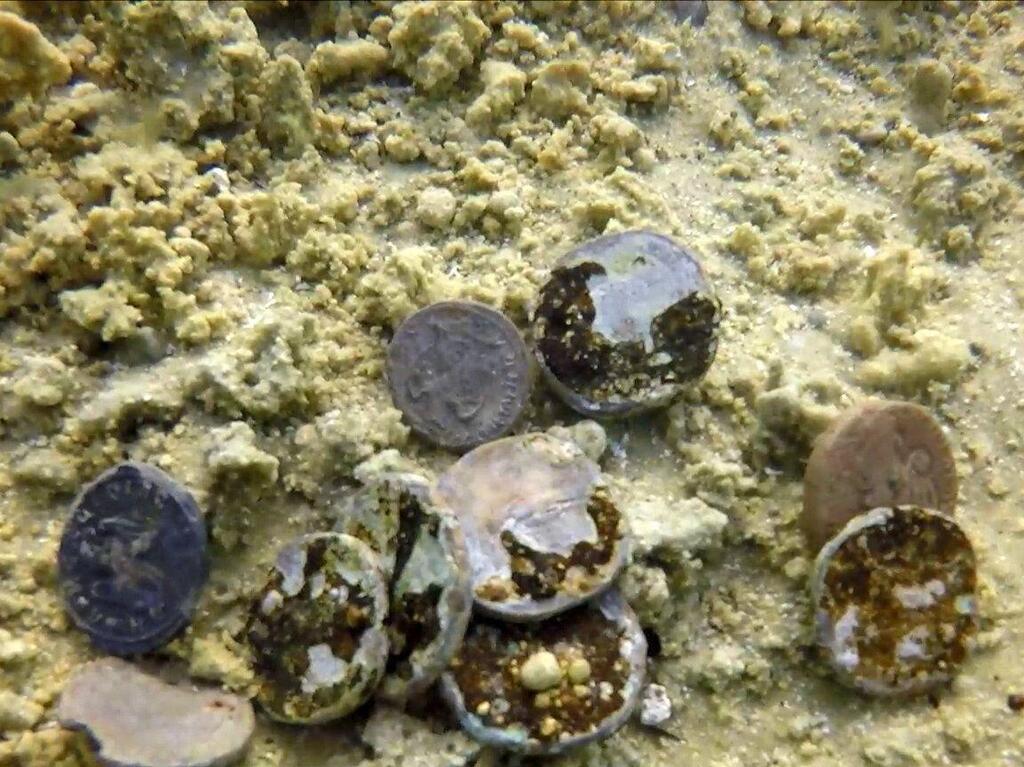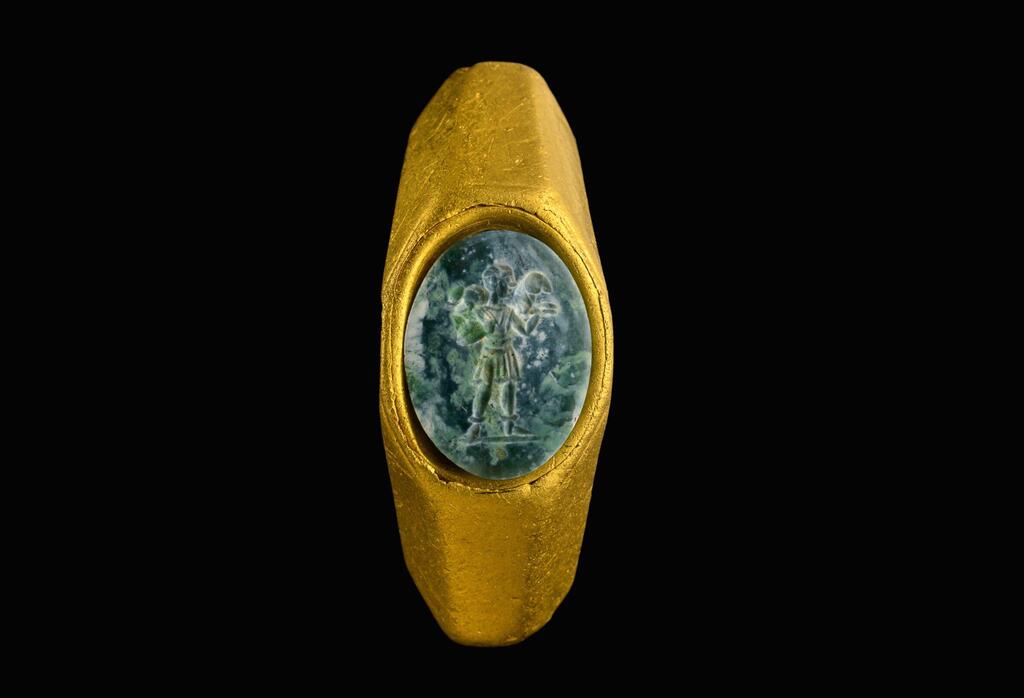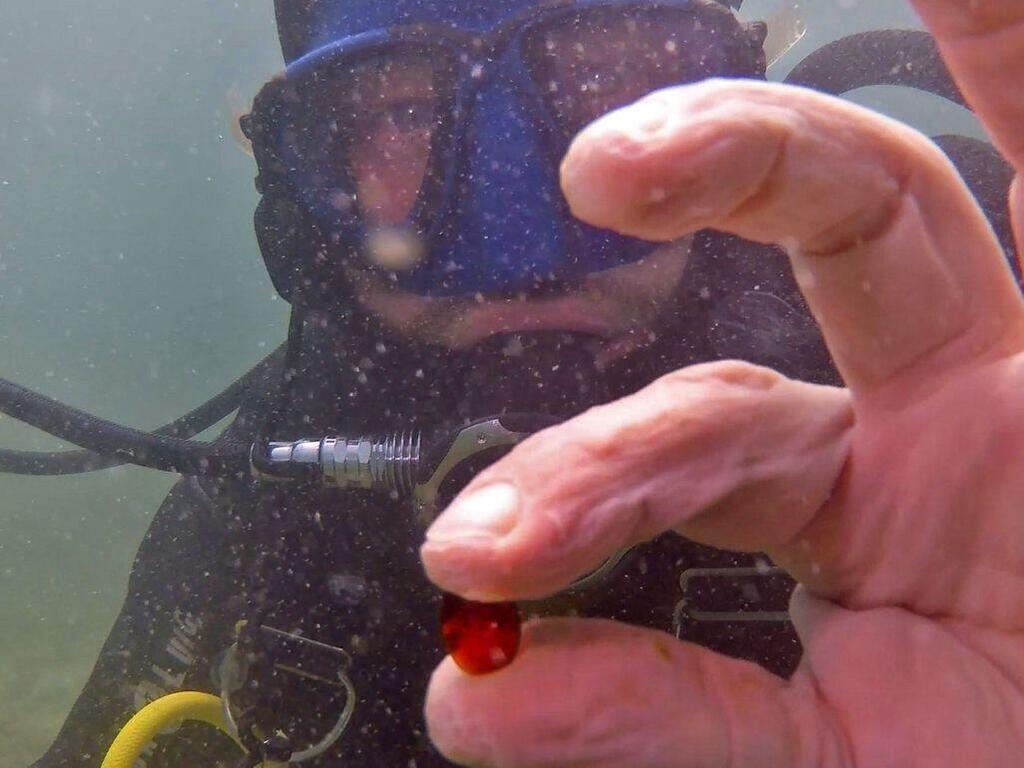Israeli archaeologists uncovered hundreds of ancient coins off the coast of the town of Caesarea, the country's antiquities authority said Wednesday.
The Israel Antiquities Authority said in the underwater dig off the Caesarean coast they found hundreds of silver coins from the 13th to 16th centuries, along with silver and bronze coins from the Roman period.
3 View gallery


The coins from the 13th to 16th centuries as found underwater
(Photo: Dafna Gazit, Israel Antiquities Authority
)
The affluent, central Israeli town inherits its name and much of its territory from the ancient city of Caesarea Maritima, which was built by Herod the Great about 25–13 BCE as a major port.
The findings also include a bronze figurine that looks like an eagle, which was the symbol of the Romans, a pantomime mask from the Roman theater and bronze bells that were used to scare evil spirits. These items were most likely on ships that sunk some 1,700 years and 600 years ago.
The ships' cargo and wreckage were found scattered in shallow water, over a few dozen meters.
3 View gallery


The thick gold ring with the image of the Good Shepherd
(Photo: Dafna Gazit, Israel Antiquities Authority
)
Marine Archaeology Unit researchers Yaakov Sharvit and Dror Plener said: "the ships probably docked nearby, out of fear or distress of an upcoming storm, and the storm made them sink. Since sailors know that docking in shallow waters not in a well-formed harbor is dangerous."
The wrecked ships also had rare personal items of people who were on them but did not survive. Among other things, a red gemstone was uncovered, designed to be set on a ring, and on the top side of it, a musical instrument was craved, known as the violin of David in the Jewish tradition.
Another artifact that was found was a thick gold ring, shaped in an octagonal form, with a green gemstone, on which a young boy, a shepherd, dressed in a tunic, with a deer or sheep on his shoulders is carved. This image, of the Good Shepherd, is known in ancient Christian art as a symbol of salvation.
Director of the Israel Antiquities Authority Eli Eskozido said: "the beaches of Israel are rich in ancient sites and artifacts, and they are of great importance as national and international heritage cultural assets. The antiquities authority conducts a lot of sea operations to locate and secure antique items since they are very vulnerable and delicate."
"Across the beaches of Israel, there are many sporting activities - scuba diving, snorkeling, open sea swimming, and sailing, during which ancient items could be discovered from time to time. We always ask divers and others to mark their position at sea if they encounter an ancient artifact, and leave the findings in the water. The discovery and documentation of the findings in their site are of great archaeological importance, and sometimes a small finding could lead to a great discovery," added Eskozido.


